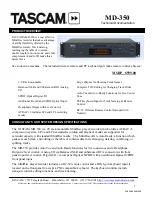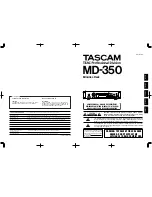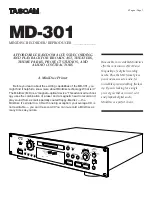
COMPONENT MAINTENANCE MANUAL
AVIATION RECORDERS
Model FA5000
Initital Issue Page 6
Sep. 30/11
Description and Operation
23–70
−
40
Use or disclosure of information on this sheet is subject to
the restrictions on the cover page of this document.
and the software. The FPGA conditions all of the input data and processes it into packets.
Digitized audio data enters the FPGA and is transmitted to the processor via the TDM
bus. All other data is processed into fixed-size packets and then sent to the processor via
register access. The processor responds to the new data sent on the TDM or via the
FPGA by executing interrupt service routines. These interrupt service routines will exam-
ine the data being sent to the processor and pass it to the appropriate task. ARINC 717
flight data is passed to the FDR task, ARINC 429 DataLink messages are passed to the
DataLink task, and digitized audio packets are passed to the CVR task. These tasks are
also sent other types of data that are needed for proper processing (i.e. discretes, rotor
speed, UTC, etc.). Each data processing task will create packets of data that can be used
for storage in the CSMU. These packets are sent to the Data Storage task which will write
them to the appropriate place in the CSMU.
The BITE task is used to store fault log information as well as other system-related in-
formation. All tasks will be able to communicate with the BITE task for the purpose of
sending fault information and/or system status information.
The user can interface to the Model FA5000 in several different ways. All of the interfaces
use an Ethernet network as the means for transferring data. The most common interface
will be to a web server via an HTTP connection. This will present web pages to the user
that will allow for real-time data monitoring, system status monitoring, CSMU data retriev-
al, and other recorder-specific functions. The user will also be able to create an FTP con-
nection that can be used in conjunction with the file system to retrieve data stored in the
CSMU. For testing purposes, a TCP/IP connection can be made with the GSE task to
perform operations that are normally not intended for the end-user.
The Model FA5000 contains a CSMU (non-volatile memory) that is used to store audio
data, flight data, and DataLink messages. Since the memory size is finite, it is possible for
the memory to fill up with the information being stored there. This situation will be handled
by the Data Storage task that is responsible for writing the data to the CSMU. This task
will keep a circular buffer for data being stored. As a minimum, the most recent 2 hours of
audio data and DataLink messages will be kept along with the most recent 25 hours of
flight data.
The Model FA5000 will be able to be loaded via the TCP/IP interface used by the GSE
task. This task will report a checksum of the loaded code to ensure the integrity of the
newly loaded software.
There will be no user-modifiable software and multiple-version dissimilar software in the
design of the Model FA5000.
The document reference is online, please check the correspondence between the online documentation and the printed version.
















































